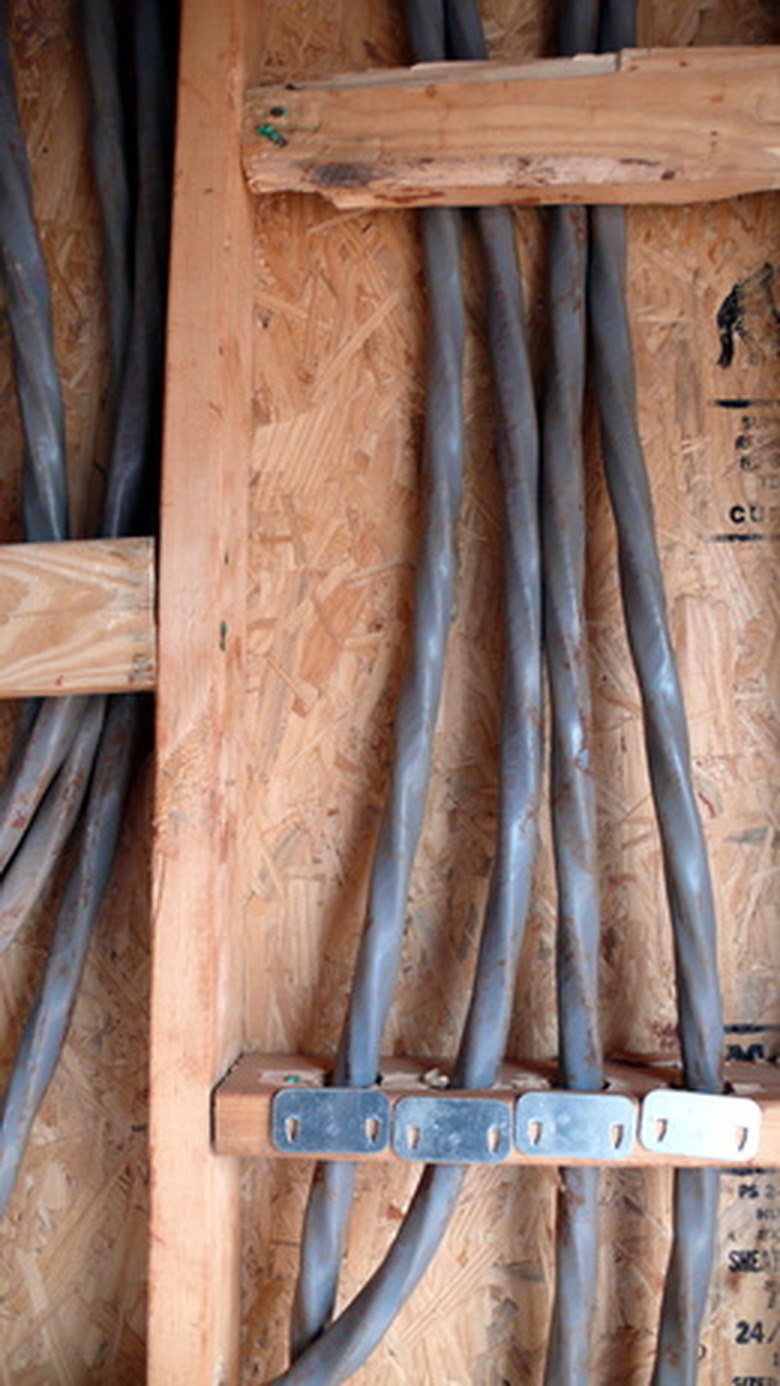How To Measure The Diameter Of A Electrical Cable
Things Needed
-
Wire gauge measuring tool
-
Vernier calipers
-
Fabric measuring tape
A typical electrical cable contains one thick wire wrapped by an outer jacket. The wire diameter, or wire gauge, determines the load it can safely carry. Code inspectors measure the diameters of wires to be sure they are safe for use in buildings. Household electrical wire runs behind walls through raceways, such as conduit or ROMEX®. Measure electrical wire or cable diameter to ensure it can safely work under the expected load for your purposes.
Step 1
Measure electrical cable diameter with a wire gauging device. To do this, clamp the two halves of the diameter gauge around the cable at various circular fittings until finding the one that encircles the wire snugly without biting into the outer jacket. Read the diameter figure by that circle.
Step 2
Measure the diameter with calipers. Place an electrical wire between the jaws of a set of Vernier calipers. Slide the movable jaw around the cable without compressing the insulation and read the measurement where the line from the moving indicator meets the stationary scale for a diameter.
Step 3
Measure the circumference of wires. By doing this, you can calculate diameter. Measure around the outside of the insulation jacket with fabric measuring tape or by wrapping a strip of paper around the jacket and marking the point where the paper meets itself. Unroll the paper and measure the length from the end to the mark to figure the circumference.
Step 4
Divide the circumference of wires by 3.14, or Pi. The formula for figuring diameter from circumference is: circumference divided by Pi equals diameter, or C ÷ ? = D. Use 3.14 as a near equivalent of Pi for the conversion. The measurement figure will be approximate and may not convert to the exact metric diameter of the cable.
